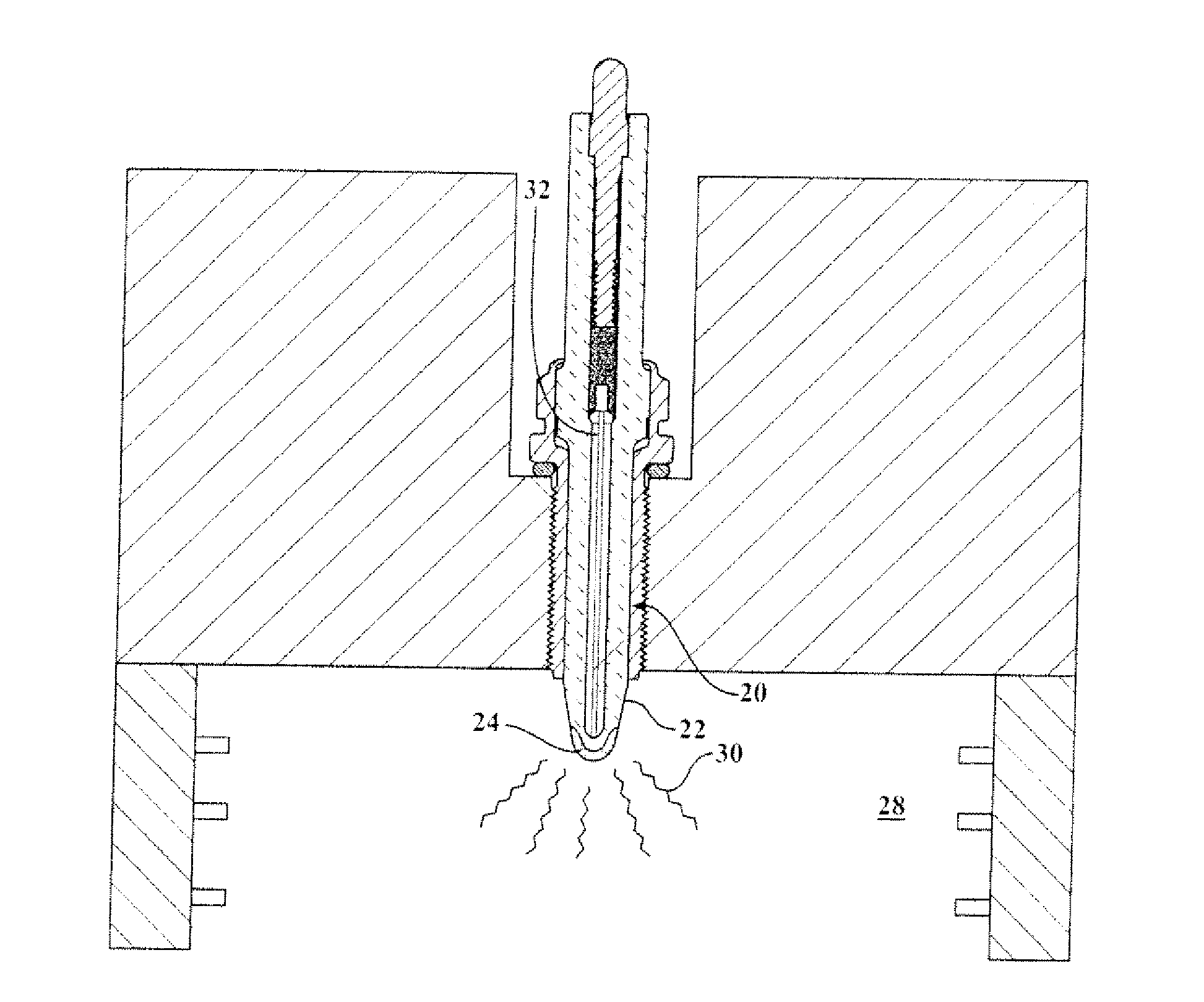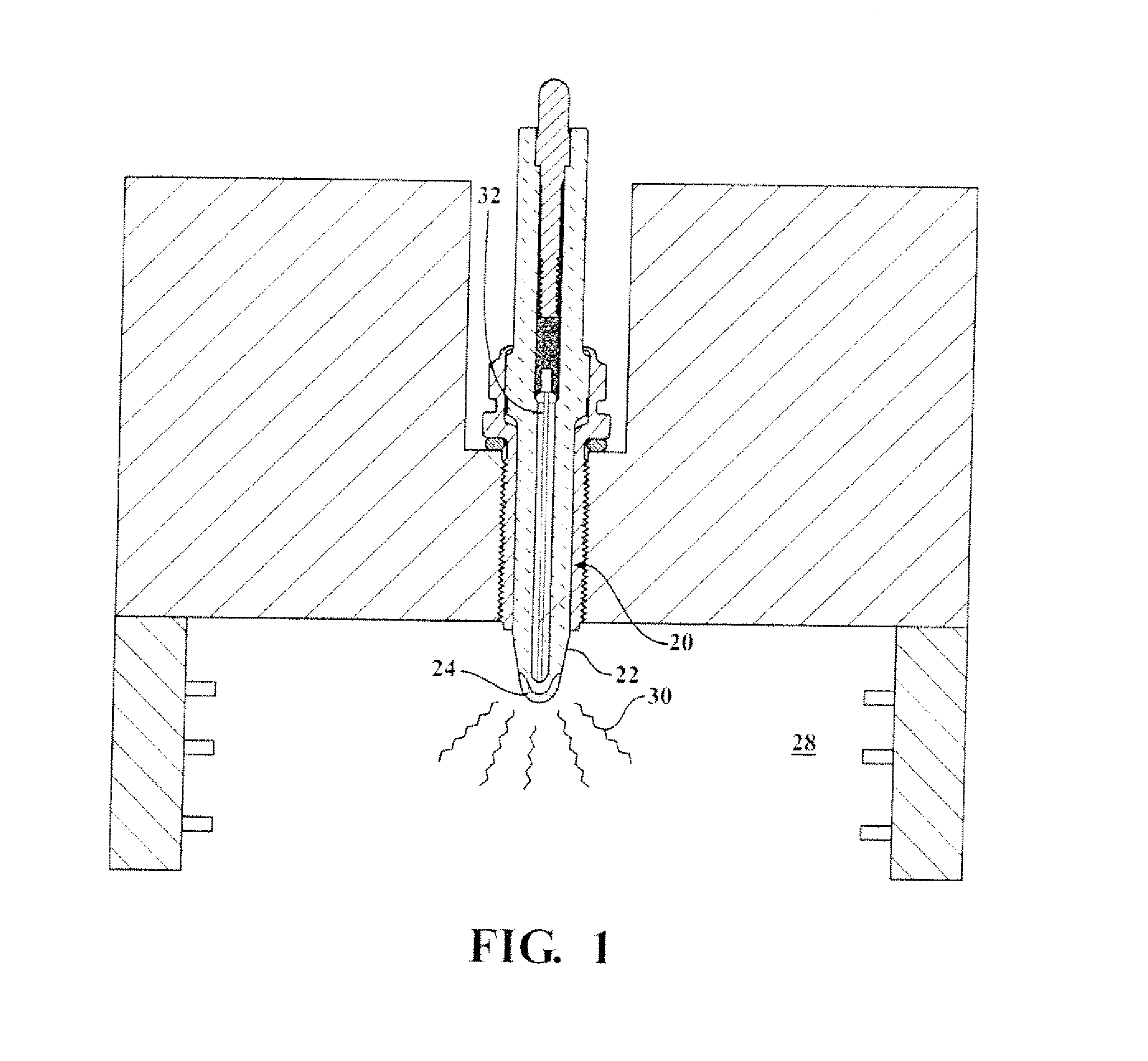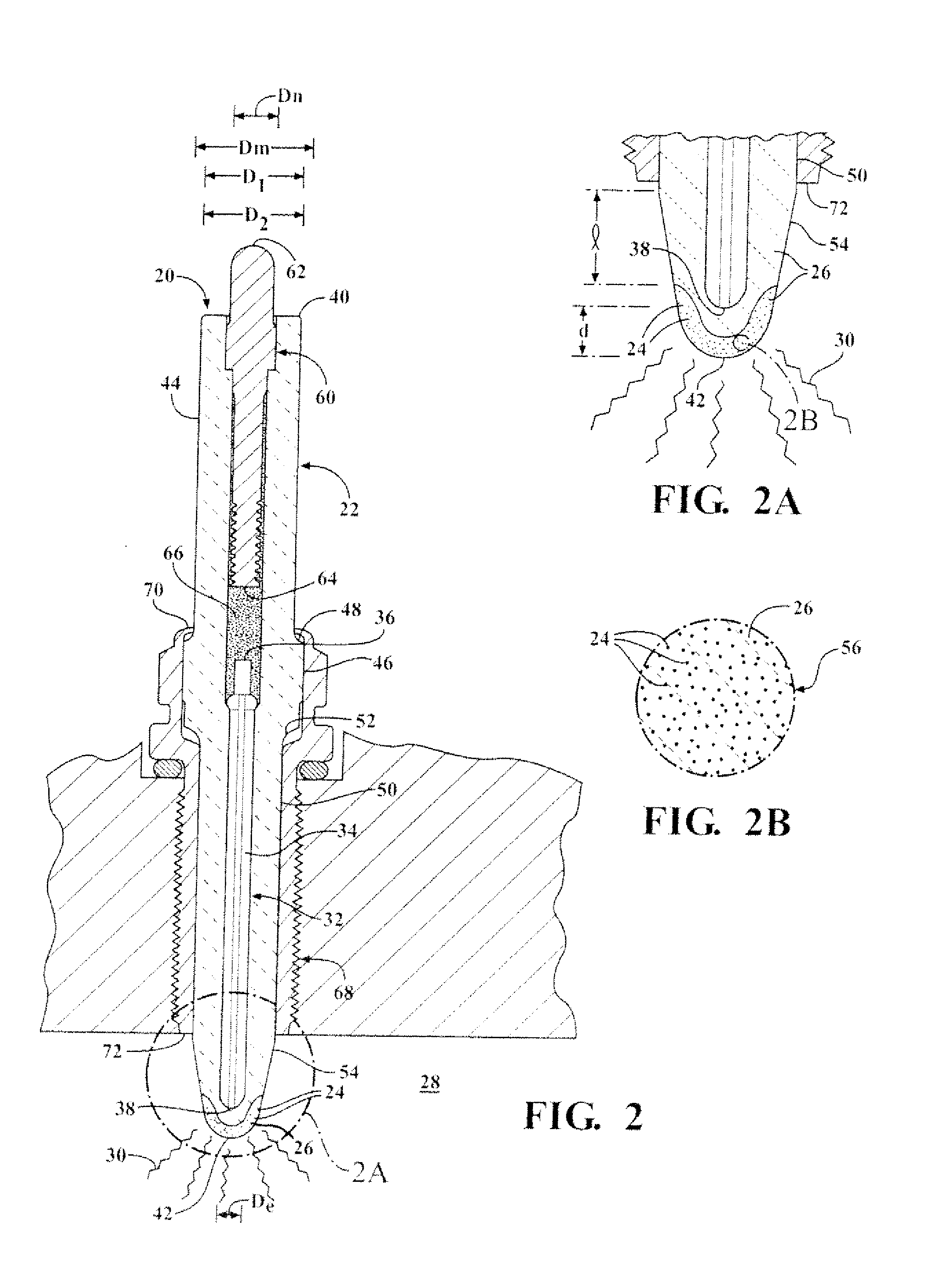Non-thermal plasma ignition arc suppression
a plasma ignition and suppression technology, applied in the manufacture of spark plugs, engine components, electrical equipment, etc., can solve problems such as reducing the quality of ignition, and achieve the effects of reducing or eliminating arcing, reducing co2 emissions, and improving fuel economy
- Summary
- Abstract
- Description
- Claims
- Application Information
AI Technical Summary
Benefits of technology
Problems solved by technology
Method used
Image
Examples
Embodiment Construction
[0019]One aspect of the invention provides an igniter 20 for a corona ignition system, as shown in FIGS. 1-3. The igniter 20 includes an insulator 22 with a plurality of electrically conducting elements 24 disposed in a matrix 26 of electrically insulating material, such as metal particles embedded in the matrix 26, or holes in the matrix 26. As shown in FIG. 1, the igniter 20 is disposed in a combustion chamber 28 of an internal combustion engine and receives a voltage from a power source (not shown). An electrode 32 of the igniter 20 is charged to a high RF voltage potential, creating a strong RF electric field in the combustion chamber. The electric field is controlled so the mixture of fuel and air in the combustion chamber maintains dielectric properties. The electrode 32 emits a non-thermal plasma including multiple streams of ions forming a corona 30 to ionize a portion of the fuel and air in the combustion chamber 28.
[0020]The electrode 32 of the igniter 20 includes an elect...
PUM
 Login to View More
Login to View More Abstract
Description
Claims
Application Information
 Login to View More
Login to View More - R&D
- Intellectual Property
- Life Sciences
- Materials
- Tech Scout
- Unparalleled Data Quality
- Higher Quality Content
- 60% Fewer Hallucinations
Browse by: Latest US Patents, China's latest patents, Technical Efficacy Thesaurus, Application Domain, Technology Topic, Popular Technical Reports.
© 2025 PatSnap. All rights reserved.Legal|Privacy policy|Modern Slavery Act Transparency Statement|Sitemap|About US| Contact US: help@patsnap.com



